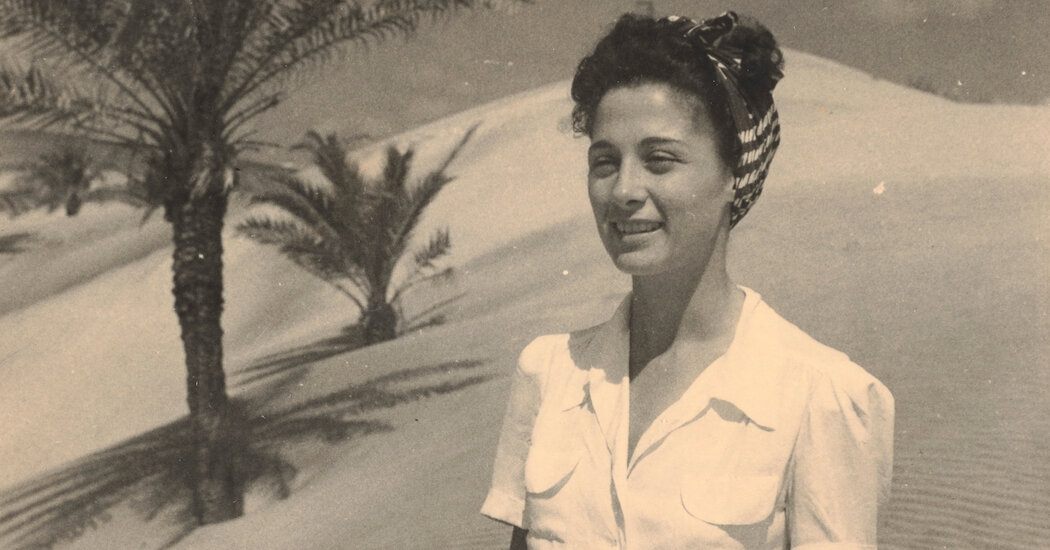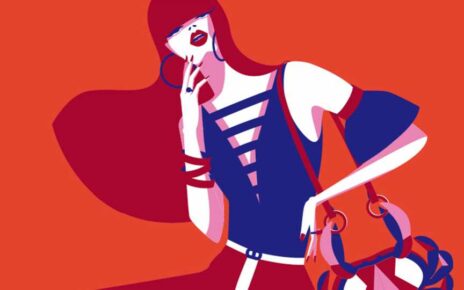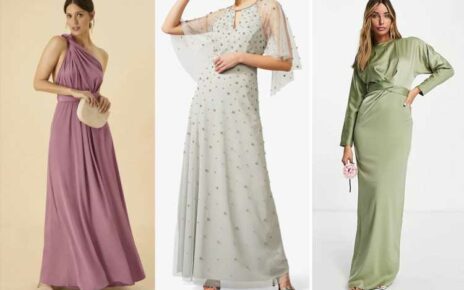Gaby Aghion, the founder of the French fashion house Chloé, blazed a bold trail for female entrepreneurship.
An Egyptian émigré in postwar Paris who became a fixture of the Left Bank intellectual scene, she spotted a gap in the market between the physical and financial constraints of haute couture and the ubiquitous (and often bad) dressmaker copies worn by many women. Ms. Aghion, a godmother of contemporary ready-to-wear fashion, today a multibillion dollar global industry, also hired a raft of talented young designers, including Karl Lagerfeld, subject of this year’s blockbuster fashion exhibition at the Metropolitan Museum of Art, set to open in May.
It feels fitting, then, that Ms. Aghion will soon have a show of her own. “Mood of the Moment: Gaby Aghion and the House of Chloé” is scheduled to open Oct. 13 and will be the first major museum exhibition on Chloé or its founder to be held in New York City. But it won’t be staged at one of the institutions usually favored for fashion exhibitions, like the Cooper Hewitt or the Fashion Institute of Technology. Instead, the show will be unveiled 10 blocks north of the Met on Fifth Avenue — at the Jewish Museum.
“Very few people appear to know that Gaby was Jewish or as much about her incredible life and entrepreneurship as they should,” Claudia Gould, the museum’s director, said on a telephone call this week. She suggested that, in part, that may be because Ms. Aghion, who often said her name sounded like that of a fortune teller, opted to use the name Chloé upon which to build her fashion business rather than her own.
“It was smart, especially as a foreigner, to use something accepted and slightly generic, and she loved the roundness of the letters and the youthful feminine image the name conveyed, but it took some of the focus away from her,” Ms. Gould said. “As soon as I heard the Gaby Aghion story, I wanted us to celebrate it. Both her brand, which is synonymous with effortless luxury, but also the relatively unknown Jewish woman who founded it and who has largely gone under the radar.” In 1952, after telling her husband she no longer wanted to live off his money, Ms. Aghion began her fledgling line with relaxed and airy feminine fashions, shows at the Café Flore and labels that bore the name Chloé rather than the boutiques that sold them. She remained involved with Chloé until 1985, when it was bought by Swiss luxury group Richemont, though she rarely missed a runway show right up until her death. The show will chart the label’s 70-year history with nearly 150 garments as well as sketches and documents from the Chloé archive that have not been seen before and include works by the industry stars who began their careers at the brand, including Mr. Lagerfeld, Stella McCartney and Phoebe Philo. According to Riccardo Bellini, the chief executive of Chloé, Ms. Aghion was “a true believer in empowering and uplifting women to positively influence the industry and society at large.” Over email, he added that partnering with the Jewish Museum “gives us the wonderful opportunity to honor and commemorate Gabi’s heritage with our continued house’s beliefs and values.” While the Jewish Museum has documented the role played by American Jews, including Isaac Mizrahi and Helena Rubinstein, in shaping the fashion and beauty industries, Ms. Gould said that there would be little in the Chloé exhibition about what Judaism meant to Ms. Aghion, a Parisian fashion legend with roots in Jewish Egypt. “Gaby was a staunch Communist, albeit one with money, so faith was not a key focus for her,” Ms. Gould said. “The exhibit will look less at who she was religiously and more about her impact culturally and her efforts to democratize high fashion and make it available straight off the rack.” She added: “In many ways, as the title of the show suggests, she was very good at capturing the zeitgeist of the moment she was living in. But she was more than that. She was a visionary, with a powerful view of women that was very different from the prevailing view at the time.” Source: Read Full Article





